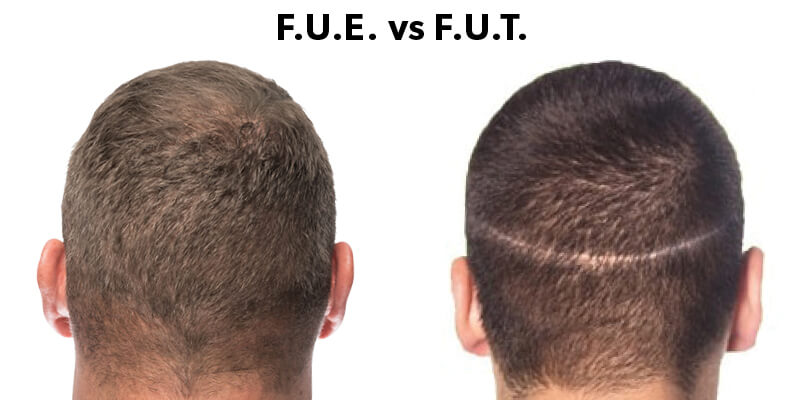Choosing the FUT or FUE hair transplant method raises countless questions. What method to choose leads to some crucial factors like benefits, anticipated outcomes, expenses. The way the hair is extracted is the fundamental difference between FUE and FUT hair transplants.
The most effective hair restoration treatment is the one that meets your specific requirements. There are two basic hair transplant procedures that are often used: FUT (Follicular Unit Transplantation) and FUE (Follicular Unit Extraction) (Follicular Unit Extraction).
Both treatments work well for restoring fuller, more natural-looking hair. These hair transplantation methods are considered permanent. Both FUE and FUT can offer you a larger head of hair and enhance your hairline.
Table of Contents
FUE (Follicular Unit Extraction)
Patients who have or may desire to wear shorter haircuts will benefit from the operation because there are no visible scars. Although some redness and discomfort are to be expected, most patients report little pain following treatment.
The follicles are prepared for implantation and then implanted into balding or thinning hair patches on your scalp. There are 2 types of FUE hair transplants:
- A physician does a manual FUE hair replacement by extracting individual hair follicles using portable equipment.
- A robotic hair transplant equipment is used in a Robotic FUE treatment, which is supervised by the physician.
FUT (Follicular Unit Transplantation):
It is a long, thin piece of tissue that is extracted from the rear of the scalp, unlike FUE hair transplants. A linear strip of your scalp is removed from the donor site during FUT. After that, the strip is cut into parts and prepared for implantation into balding or thinning regions.
Why to choose FUE Hair Restoration:
Another difference to consider between FUT and FUE is that FUE is more likely to (re)occur in the future than FUT. The rationale for this is that FUT hair replacement can last longer since hairs are extracted in a strip from a strong portion of the head (the rear) that is less prone to go bald. Because the hairs are taken from a greater area of the head with FUE, some may be prone to hair loss and of worse quality if they are not taken from a more permanent location.
The Effective Hair Restoration Technique:
Individual hair follicles are extracted and implanted elsewhere on the scalp during the FUE technique. During this procedure, the surgeon removes a strip of donor skin from the patient in order to extract individual follicular units that will be transplanted to regions of hair loss.
The FUT method, on the other hand, entails removing a large section of the scalp, isolating the follicles, and then replanting them. FUT is a procedure for restoring hair. Both treatments work well for restoring fuller, more natural-looking hair.
Both hair transplant procedures will satisfy you. But there are recognizable advantages to the FUE method. Most persons with thinning hair are suitable candidates for FUE hair transplantation, but you must have enough donor hair.
Advantages of FUE:
- Unrivaled results: Only healthy follicular grafts are used in this treatment after the hair follicles have been extracted and evaluated. The last phase produces excellent results and a more noticeable hairline or complete head of hair.
- Least Scarring: FUE scars are small and dispersed across your scalp. Scarring on the scalp of a patient’s post-recovery is minimal to non-existent.
- Hair Style: Patients who want to maintain their hair short should use the FUE hair surgery.
- Quick Recovery: The patients’ recuperation time is limited (5-7 days). There are no skin grafts or sutures used in the FUE procedure. So you’ll be able to resume your usual activities in a few days. Furthermore, because the FUE transplant method is less invasive, you will be ok soon with little pain.
Disadvantage of FUE:
It is worth mentioning that the FUT technique is less expensive than the FUE approach since the FUE technique takes longer because each individual hair follicle must be implanted graft by graft.
Is it better to use FUT or FUE?
Some contend that the FUT method produces more high-quality grafts.
This is predicated on the belief that the surgeon can identify the best quality follicular units from the strip graft with less risk of damage and that the overall survival percentage is higher than with FUE grafts.
FUT is advised when a patient’s primary objective is to attain maximal fullness via hair restoration. For individuals who have substantial balding around the crown of the head, FUT may be a better option than FUE in terms of coverage and fullness. You should discuss with the doctor your goals and expectations to achieve the desired coverage and the hairline’s final design. This will help you and your surgeon decide which method of hair transplantation is best for you.




